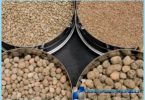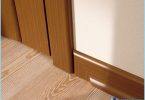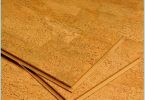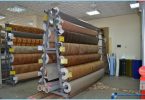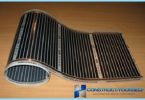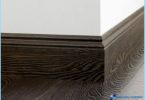The contents
Mechanical screed used to strengthen, i.e. due to the retraction process it helps to increase the endurance and strength of the supporting structure. The alignment process in a mechanized way allows you to lay a final coating is exactly, whether it’s a laminate, parquet or carpet. It allows you to increase the performance of sound insulation and heat conservation.
There are three types of mechanical screeds:
- dry;
- semi-dry;
- wet.
Mechanized dry screed made in the same way as all other types of dry screed. First, on a substrate of glassine laid a layer of clay pebbles or other granular substances. The asphalt is spread lapped and fixed on the wall 6 cm tape. Then machines are aligned floor space and are placed after gipsovolokonnyh sheets. Its main advantages rapidity of the work and he hides at no additional cost all the bumps and roughness. However, it is not recommended to do in a highly humid areas, due to the fact that he quickly picks up moisture, and high cost procedures.
Wet screed mechanized – the first, it is also called traditional method, which began with all types of ties. It is carried out using inexpensive, water-resistant sand concrete. The period of drying floor for 4 weeks. Thus, for each of the premises requires additional training. For example, for baths and kitchens where high humidity, you must first lay waterproofing. If this tie is done in private homes or on top of the soil, it is necessary to make the insulation system. It is good to use in areas with damaged cover, because the filling is made on top of the slabs. A very time consuming process.
Mechanized semi-dry floor screed ↑
We will talk about it more.
Modern mechanized semi-dry screed is the most promising, effective and less time consuming compared to traditional «wet» screed. If the object of construction chosen this method, it is also high-performance. For example, a standard team of workers, working in one shift, will be able to cover the screed is up to 260 square meters of floor. The range area depends on the complexity and features of the room.
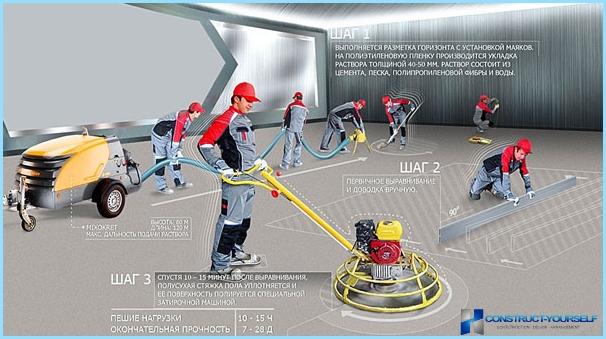
Method of mechanized screed with grinding is ideal for larger spaces where a manual method of pouring the floor is not effective. The coupler is made in such a way has low cost, finished look, gives you the most quality coverage. Due to its characteristics, this type of filling the floor is the most common in modern construction of houses and office space.
When performing certain repairs, for example, setting «warm» floor screed, as a stage of work required. The reason is that it technology mounted «warm floor».
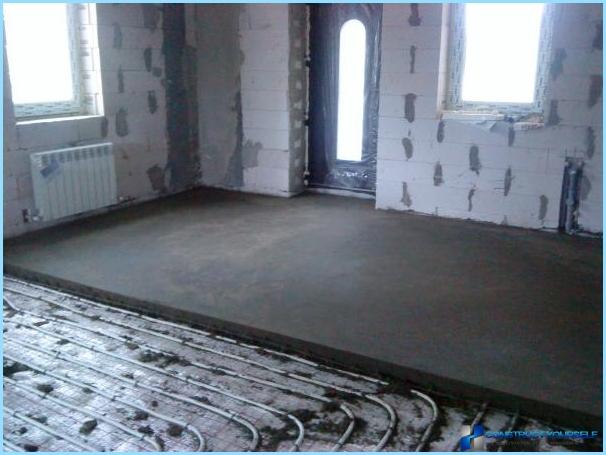
The semi-dry screed is laid before the topcoat, which may be a wood flooring, ceramic tile, Board and similar materials. There are locations where the coupler itself is the final coating. Typically, this is the room of economic appointment or large storage space, for example, hangars, warehouses, garages. These areas are not required to use the minimum of sophistication the floor, only to its strength and smooth surface.
Any newly constructed premises of the assessed on the geometry of the walls and level changes in floor dry screed mechanized is rightfully considered one of the most successful technologies to create a smooth floor.
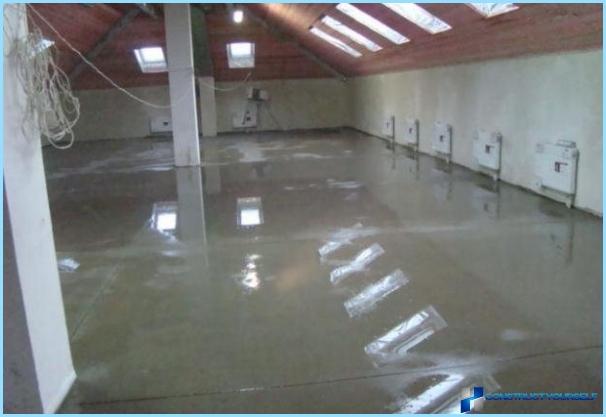
Defined by zero, prepare the surface for mechanical screed ↑
Important stage, which determines the end result works is to set the zero level. If you ignore this step, it is possible the result is not quite a flat floor, as well as increased costs of material. Therefore, always first «discourage zero» calculate the maximum height differences of the sexes.
When setting the zero level is better to use a modern accurate laser level (leveling instrument), and not hydrorunner. Through the use of a level, increases the speed of one measurement changes more than two times.
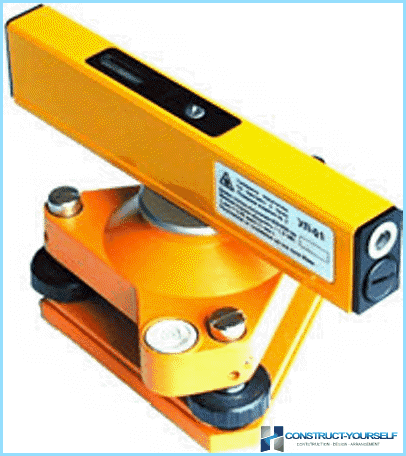
Billing «zero» the calculation of the height differences:
- first, randomly determine a point on the wall at a distance of 1.0 – 1.2 meters from the floor;
- using a laser beam level, make a mark on other walls, corners and other rooms on the same level;
- connect the marks with a space and eventually get a straight line relative to the horizon, not sex.
- next, from the zero level in more locations, measure the height from the ground level to the floor, record the dimensions on the surface size changes.
The difference you need to consider to properly establish the thickness and calculate the volume of the cement-sand mortar. Depending on what is expected of the final coating depends on the thickness of the screed. The minimum allowed is 30 mm, less do not, since the layer will not stick – will crumble. The thickness of the screed can be from 2 to 8 cm.
There are two rules that try to adhere to a construction crew:
Rule 1. The thicker the finish, the thinner the screed. When calculating the thickness of the screed is taken into account from what materials it will be the final cover.
Rule 2. In each room the screed should be laid in one go. This is necessary to avoid tearing, joints layer, which are the reasons for the displacement of layers and the formation of large cracks.
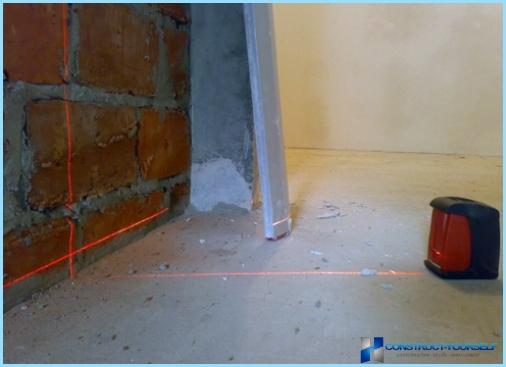
When prepared horizontal level of the zero level, it is necessary to thoroughly prepare the surface to fill a semi-dry screed mechanized. Carefully inspect the subfloor, if found detached, they are carefully trimmed, the gap between the plates obscure non-shrink cement. Remove large debris, rebar, wire and other debris. Floor sweep, removed the dust using a vacuum cleaner. To improve the adhesion of floor covered with primer.
The mixture for mechanized semi-dry screed ↑
After the surface is prepared, walls and vertical surfaces need to be protected by waterproofing. For this purpose, the perimeter of the wall, fix polypropylene tape, but always so that the top edge of the tape was above the solution level.
Then, the surface of poured screed mortar the consistency of thick dough – do not make the mixture liquid. Under the mixture for mechanized screed understand the mixing of sand of large size, Portland cement, polymers and water. At first combine the dry mixture and then water is added. Water is taken in small numbers, as its role is only to start the process of cement hydration. This allows the day the screed should be strong enough to withstand pedestrian loading, and after 96 hours withstand any load on the surface.
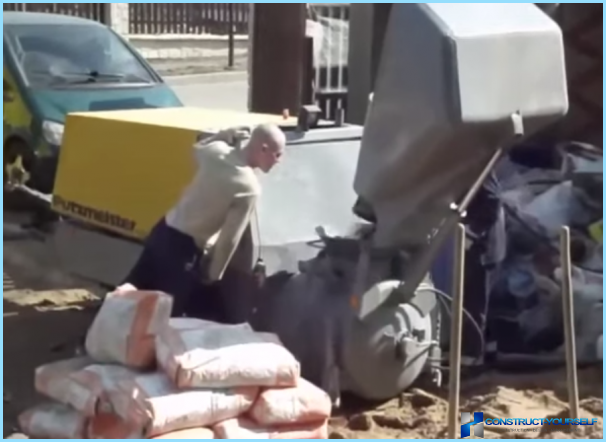
Added to the mixture of reinforcing fiber – polymer. Fiber is composed of mikronite in the amount of up to 6 million pieces per cubic meter. The use of polymer aimed at improving the binder properties, increase of qualitative characteristics, for example, it prevents the appearance of cracks in concrete during installation.
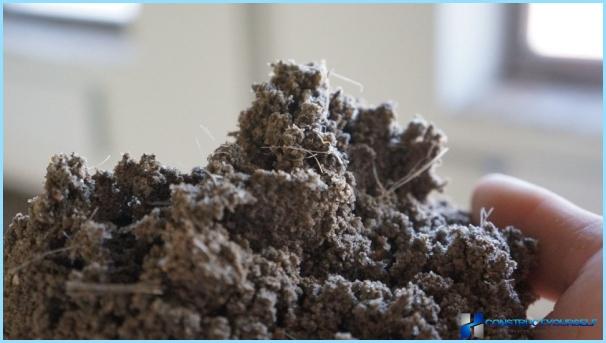
The equipment used for mechanized tie ↑
The solution is mixed directly at the construction site and using special equipment supplied to place the fill. The equipment for mixing and flow is stationary and mobile, but in General, in addition to maneuverability, the other distinguishing between properties is not. Large construction companies prefer to have a permanent installation for the preparation and submission of concrete to site of laying.
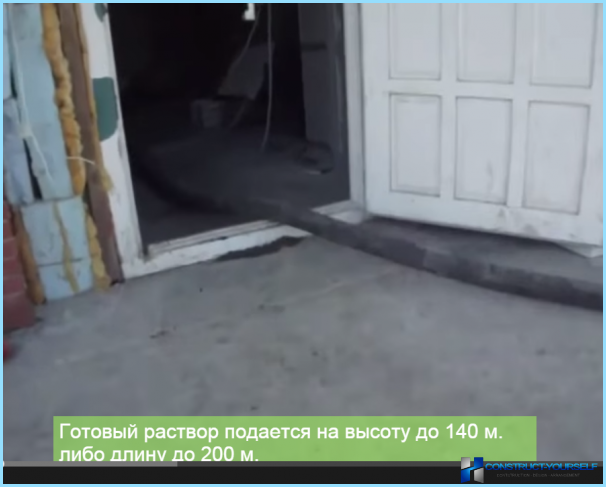
For the mechanized method, the solution is fed through the sleeve of the blower to the location of the construction works. Depending on the equipment model, the flow of the mixture is possible up to a height of 30 floors and up to 200 m horizontally.
Drying and grout floor ↑
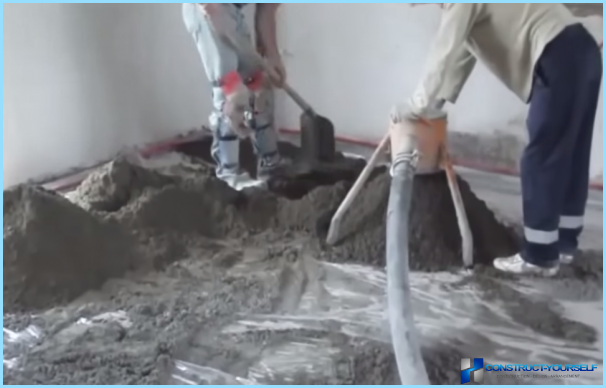
How long will it take the mixture to dry depends on several parameters: indoor temperature, humidity and thickness of layer of solution, but usually after a week the surface is ready for loads of painting and decorating.
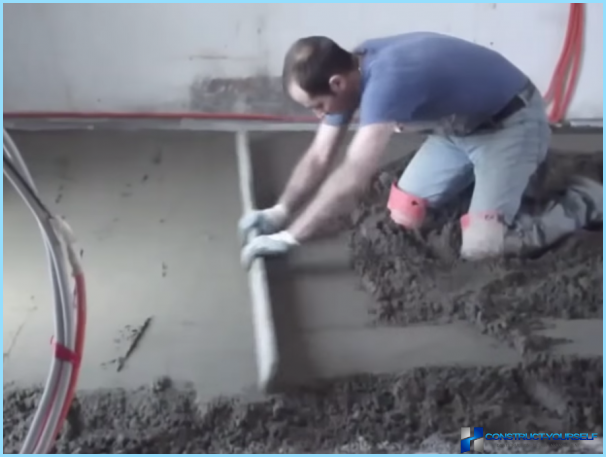
Then use disk machine for troweling the surface. Operator, specialized in shoes produces a smoothing of the surface premises. Thereby eliminating surface voids, compacting screed. The surface is perfectly smooth, does not require additional alignment and ready to finish.
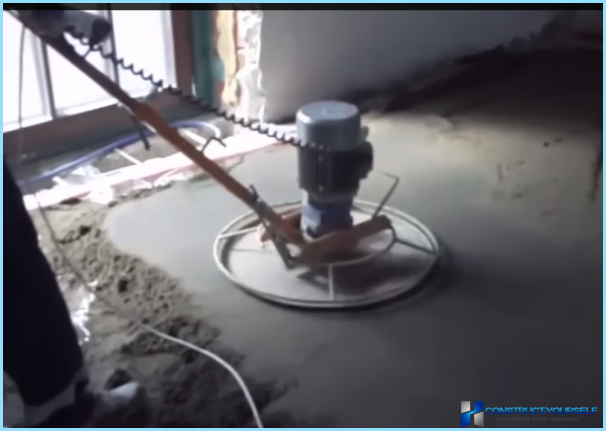
To prevent shrinkage cracks in the topping cut expansion joints.

